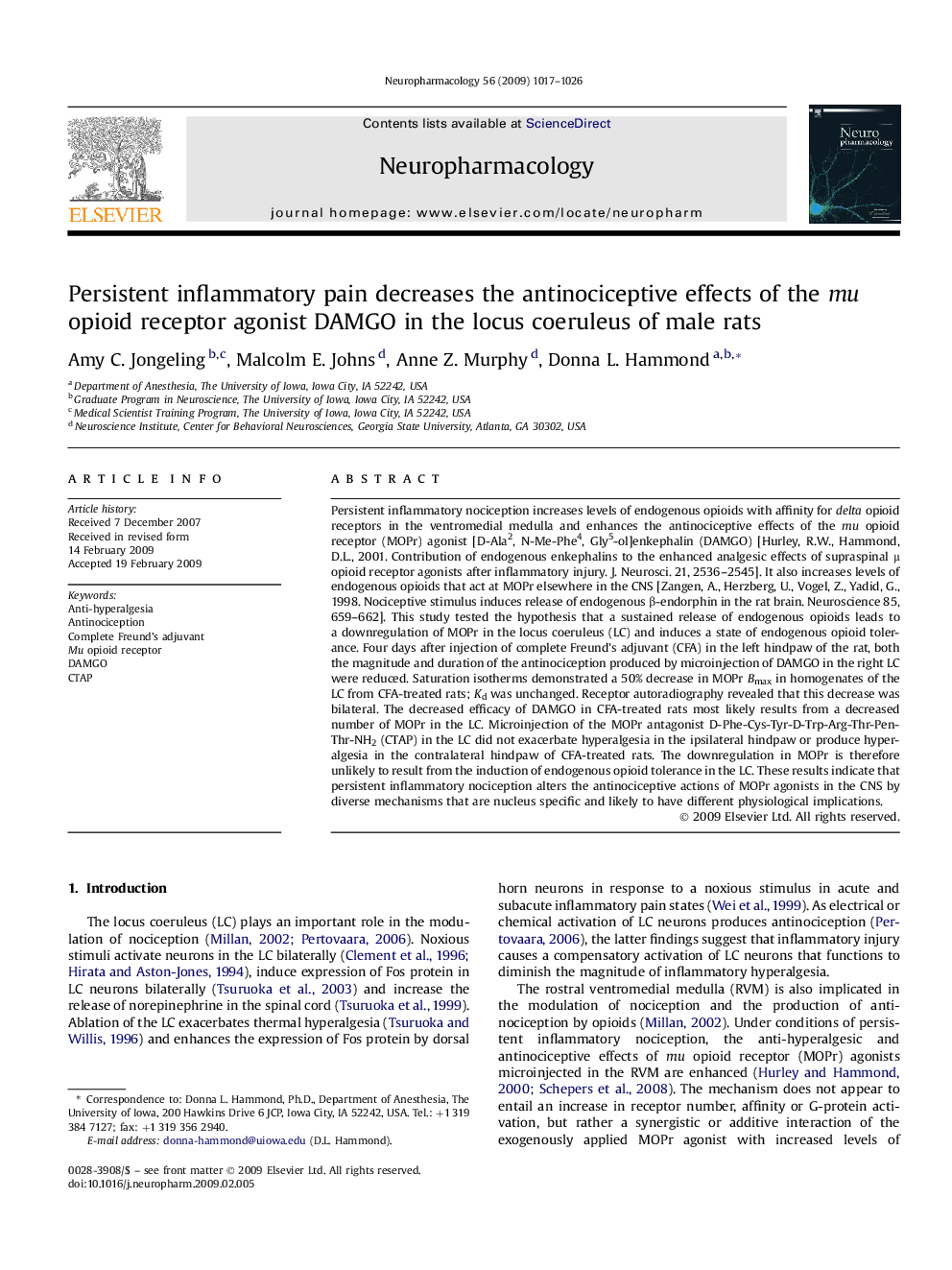| Article ID | Journal | Published Year | Pages | File Type |
|---|---|---|---|---|
| 2494304 | Neuropharmacology | 2009 | 10 Pages |
Persistent inflammatory nociception increases levels of endogenous opioids with affinity for delta opioid receptors in the ventromedial medulla and enhances the antinociceptive effects of the mu opioid receptor (MOPr) agonist [D-Ala2, N-Me-Phe4, Gly5-ol]enkephalin (DAMGO) [Hurley, R.W., Hammond, D.L., 2001. Contribution of endogenous enkephalins to the enhanced analgesic effects of supraspinal μ opioid receptor agonists after inflammatory injury. J. Neurosci. 21, 2536–2545]. It also increases levels of endogenous opioids that act at MOPr elsewhere in the CNS [Zangen, A., Herzberg, U., Vogel, Z., Yadid, G., 1998. Nociceptive stimulus induces release of endogenous β-endorphin in the rat brain. Neuroscience 85, 659–662]. This study tested the hypothesis that a sustained release of endogenous opioids leads to a downregulation of MOPr in the locus coeruleus (LC) and induces a state of endogenous opioid tolerance. Four days after injection of complete Freund's adjuvant (CFA) in the left hindpaw of the rat, both the magnitude and duration of the antinociception produced by microinjection of DAMGO in the right LC were reduced. Saturation isotherms demonstrated a 50% decrease in MOPr Bmax in homogenates of the LC from CFA-treated rats; Kd was unchanged. Receptor autoradiography revealed that this decrease was bilateral. The decreased efficacy of DAMGO in CFA-treated rats most likely results from a decreased number of MOPr in the LC. Microinjection of the MOPr antagonist D-Phe-Cys-Tyr-D-Trp-Arg-Thr-Pen-Thr-NH2 (CTAP) in the LC did not exacerbate hyperalgesia in the ipsilateral hindpaw or produce hyperalgesia in the contralateral hindpaw of CFA-treated rats. The downregulation in MOPr is therefore unlikely to result from the induction of endogenous opioid tolerance in the LC. These results indicate that persistent inflammatory nociception alters the antinociceptive actions of MOPr agonists in the CNS by diverse mechanisms that are nucleus specific and likely to have different physiological implications.
